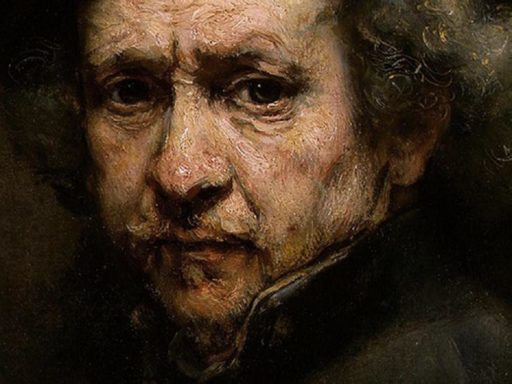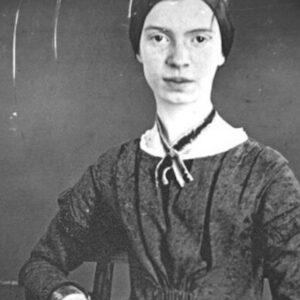What am I doing when I feel myself “absorbed” by a painting or photograph or dramatic performance?
I’ve asked myself that question before, though never deeply. But I see that deficiency more clearly now, thanks to my current fascination with the writings of art critic Michael Fried as well as those of philosopher Stanley Cavell. Both writers explore in depth the dynamic relation between beholder and beheld, between the viewer of an object of visual art and the object itself.
Fried in particular explores the subtle ways in which the distinction between viewer and viewed collapses through a process of “absorption.” And yet the more carefully we look at this relationship of “absorption” between ourselves and a great painting, photograph, or performance, the more the two of us— artwork and viewer— begin to become, not a simple blending or confusion of both, but a third thing, or maybe the whole thing, something like the whole artistic expression, the fully if temporarily achieved union of artistic intention and esthetic response.
How this “third thing” happens is always a mystery. Recently, though, in the midst of my groping to understand what I was learning from Fried (and Cavell) about “absorption,” I stumbled upon a poem by C. K. Williams that has thrown light on the question for me. The poem is entitled “Self-Portrait with Rembrandt Self-Portrait.” Here it is:
I put my face inches from his and look into his eyes which look back, but whatever it is so much beyond suffering I long towards in his gaze and imagine inhabiting mine eludes me.
I put my face inches from his face palette-knifed nearly raw scraped down to whatever it is that denies flesh yet is flesh but whatever it is which still so exalts flesh, even flesh scraped nearly raw, eludes me.
My face inches from his face neither frowning nor smiling nor susceptible any longer to any expression but this watch, this regard, whatever it is I might keep of any of that eludes me.
My face inches from his, his inches from mine, whatever it is beyond dying and fear of dying, whatever it is beyond solace which remains solace eludes me, yet no longer eludes me.
What struck me about Williams’s poem is, first, that he has chosen to write about perhaps the most “absorptive” paintings ever produced, Rembrandt’s forty or so self-portraits. (Not to mention perhaps sixty more, mostly in the form of engravings.) Who can resist that seemingly bottomless gaze piercing into our eyes from the canvas, especially in the self-portraits Rembrandt painted in old age?
And, second, that Williams is not simply describing the reaction of being absorbed by one of those self-portraits. Instead, Williams is placing his reaction alongside the portrait itself, and is watching the absorption from a third position outside both. From that external vantage point he notes that his absorption isn’t static—it isn’t a “freezing” before the self-portrait, or a disappearance into it—but an active process of using his own eyes to dig, delve, penetrate into, and absorb (or to be absorbed into) the “whatever it is” that the painting’s eyes seem to be inviting him to discover within them. But the painting’s eyes, while seeming to invite absorption, also seem to thwart it: to tease it and then “elude” it.
The playful dynamism of this game being played between Rembrandt’s painted self-portrait and his own written one is why I think Williams has divided his reaction into four separate stages of equal length and given each stage its own portrait-shaped stanza, with a mirroring syntactic structure in each, as if each stanza could stand in for a painted version.
In fact, the more I’ve puzzled over this mirroring structure, the more “Self-Portrait with Rembrandt Self-Portrait” looks to me like a “shape” poem. I imagine each stanza hanging like a painted self-portrait on a gallery wall, and then I see them hanging side by side—as Rembrandt’s own many self-portraits are sometimes hung in real galleries—so that I can inspect, as I do with Rembrandt’s, the minute changes in atmosphere and experience and self-understanding that the grouped self-portraits suggest.
But if the stanzas are framed separately and hung in close sequence on a gallery wall, where in relation to them is the Rembrandt self-portrait they’re reacting to? Well, it is clearly facing them; otherwise what does it mean when the poet says “I put my eyes inches from his”? So somehow, in this imaginary, impossible gallery I’m now constructing, Williams’s own self-portraits are “inches” away from the self-portrait they’re trying to absorb. And they seem to “inch” closer from one stanza to the next, as if they’ve been hung on a gallery wall moving parallel to the painting’s wall but also moving closer and closer to it.
Yes, moving just like a museum-goer, who, struck as so many over the centuries have been by the absorptive gaze of Rembrandt’s hundred self-portraits, places her eyes closer and closer to the painted surface of one of them as if to discover the secret of her attraction.
But I’m forgetting that the poem’s perspective is not that of a viewer looking at a painting but that of a poet shaping the interaction between the two. And what the poet is creating is a drama of exploration—a drama provoked by the painting into the mystery of human life. The poet is absorbed not by personal questions about Rembrandt or himself but instead by those, in stanza one, about what lies “beyond suffering”; then in stanza two about that which “exalts flesh.” In each case the poet assumes that the answer to his question lies somehow within the painting, as if the answer were a secret that the painting is both revealing and concealing.
But then in stanza three the distinction between the two pairs of eyes, the poet’s and the painting’s, becomes blurred. My face inches from his / face neither frowning / nor smiling… The phrase “neither frowning nor smiling” could refer to either face. And “this watch, this regard” seems to be a conjunction of both gazes, as if both viewer and viewed share in a mirroring question that reveals and conceals itself equally to and from both of them.
The mirroring is explicit in the final stanza. My face inches from his, / his inches from mine…brings the two gazers eye to eye, absorbed by the question haunting both of them: whatever it is beyond / dying and fear of dying….
Yet there is more here than a mirroring of absorptive yearning. And more than a teasing game of tag that the yearning leads to. There is a momentary harmony of opposites: whatever it is beyond solace / which remains solace / eludes me, / yet no longer eludes me. There is in both painting and poem an inviting and a sustaining of our deepest desire to understand ourselves. An honoring of that desire, not a pretending to satisfy it. Can we expect or want art to do more?
After getting his PhD in English literature, George Dardess taught close reading to his own students until his retirement. Since then he has been ordained a Deacon in the Roman Catholic Church and written several books on Muslim-Christian relations. He has also created the graphic novel Foreign Exchange.





